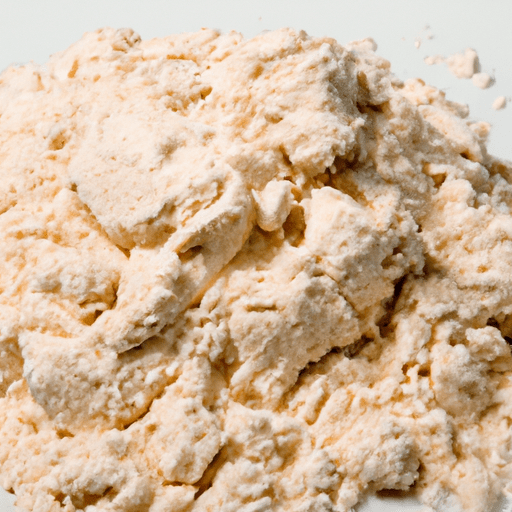The Versatile World of Gluten-Free Baking Mixes
If you’re exploring the realm of gluten-free baking, you’ve probably come across the term “gluten-free baking mix.” But what exactly is it, and why is it such a popular choice among those with gluten sensitivities or dietary restrictions? In this blog post, we’ll delve into the world of gluten-free baking mixes, uncover the reasons behind their popularity, and explore their various uses and benefits. So, let’s get started!
Understanding Gluten-Free Baking Mixes
At its core, a gluten-free baking mix is a pre-packaged blend of flours, starches, and sometimes leavening agents, specifically designed for those avoiding gluten. Gluten is a protein found in certain grains, such as wheat, barley, and rye, which many people with celiac disease or gluten intolerance can’t consume without experiencing adverse effects.
Gluten-free baking mixes are carefully formulated to mimic the properties of traditional wheat-based flour, allowing individuals with gluten-related dietary concerns to enjoy the pleasures of baking without compromising on taste or texture.
A Multitude of Flavors and Uses
One of the most impressive aspects of gluten-free baking mixes is the sheer variety available. From all-purpose blends to specific mixes like pancake mix, pizza dough mix, or even cake mix, there is an option to suit every baking need. These mixes often incorporate a combination of gluten-free flours like rice flour, almond flour, coconut flour, or chickpea flour, along with starches like tapioca or potato starch. The resulting blend provides the versatility required for different recipes.
Whether you’re craving a classic chocolate cake, fluffy pancakes, or a mouthwatering pizza crust, you can find a gluten-free baking mix that will serve as an excellent substitute for traditional wheat flour, minus the gluten. This convenience makes gluten-free baking mixes a go-to choice for both beginners and experienced bakers, as they eliminate the need to mix different flours and starches together.
Unleashing the Nutritional Power
While gluten-free baking mixes are primarily valued for their culinary convenience, they also bring a host of nutritional benefits. Many blends contain whole grain flours, which are rich in fiber, essential vitamins, and minerals. Additionally, some mixes incorporate alternative flours like almond or coconut flour, which add their own unique nutritional profiles to the mix.
When it comes to gluten-free baking, it’s important to note that some traditional vitamins and minerals present in wheat-based flours may be lacking. However, by consciously choosing gluten-free baking mixes enriched with vitamins and minerals or incorporating nutrient-dense ingredients, you can easily bridge this gap.
Fun Facts and Historical Tidbits
Did you know that the history of gluten-free baking can be traced back centuries? In ancient China, food historian and writer Naomi Duguid discovered a recipe for rice flour dumplings, similar to the modern-day gluten-free approach.
Fast forward to the 20th century, and gluten-free baking gained traction when doctors began prescribing gluten-free diets for individuals with celiac disease. This led to the development of various gluten-free baking products, including the beloved baking mixes we use today.
Conclusion
Gluten-free baking mixes offer a gateway to a world of delicious baked goods for individuals with gluten sensitivities or dietary restrictions. With their carefully crafted blends, they allow bakers to recreate favorite recipes without sacrificing taste or texture. From cakes to bread, pancakes to pizza crusts, the possibilities with gluten-free baking mixes are truly endless.
So, whether you’ve recently embraced a gluten-free lifestyle or are simply curious about alternative baking options, don’t hesitate to explore the vast array of gluten-free baking mixes available. Unleash your creativity, enjoy the flavors, and indulge in the wonders of gluten-free baking!
Gluten-Free Baking Mix
Origin: Gluten-free baking mix is a product that was developed in response to the growing demand for gluten-free alternatives to traditional wheat-based baking mixes. It was created to provide individuals with gluten sensitivities or celiac disease a convenient and versatile option for baking various goods.
Common Uses: Gluten-free baking mix can be used as a substitute for traditional wheat-based baking mixes in a wide range of recipes. It is commonly used to make breads, muffins, pancakes, waffles, cookies, and cakes, among other baked goods. The mix typically includes a combination of gluten-free flours, such as rice flour, tapioca flour, and potato starch, along with other ingredients like leavening agents and stabilizers.
Nutritional Benefits: Gluten-free baking mix is often fortified with additional nutrients to help compensate for the absence of wheat flour, which is naturally higher in certain vitamins and minerals. Some varieties may contain added fiber, vitamins (such as B vitamins), and minerals (such as iron). However, the exact nutritional composition of gluten-free baking mixes can vary depending on the brand and specific ingredients used.
Unique Properties or Historical Significance: Gluten-free baking mix has gained significant popularity in recent years due to the increasing awareness of gluten-related disorders and the adoption of gluten-free diets. This product has provided individuals with the opportunity to enjoy a wider variety of baked goods, even when following a gluten-free lifestyle. Its availability has allowed more people to explore gluten-free baking at home, leading to the development and sharing of numerous recipes and techniques specifically tailored to gluten-free ingredients.




Use the share button below if you liked it.
It makes me smile, when I see it.